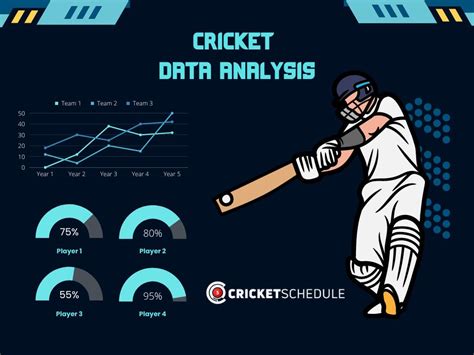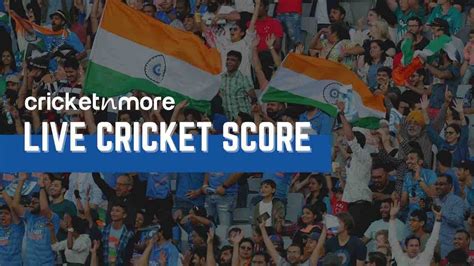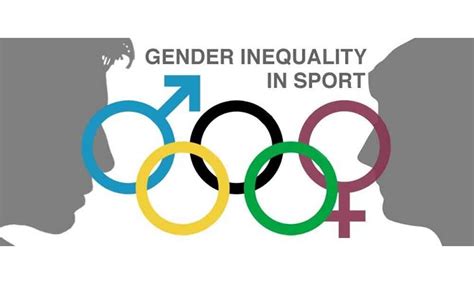Discover how cricket analytics tools enhance coaching strategies, analyze player performance, and explore top tools transforming the game. Stay ahead with future trends!In the fast-evolving world of cricket, coaches are increasingly turning to analytics tools to gain a competitive edge. These groundbreaking tools transform raw data into actionable insights, enabling coaches to make informed decisions about player performance and strategy. Whether you’re a seasoned professional or an aspiring coach, understanding how to leverage cricket analytics can revolutionize your approach to training and game management. In this article, we’ll explore the essentials of cricket analytics tools, highlight key features to consider, and showcase the top five tools that are reshaping coaching techniques. Discover how these innovative resources can help you analyze player performance and enhance your overall strategy, ensuring your team stays ahead of the curve. Join us on this journey to unlock the power of cricket analytics for coaches.
Understanding Cricket Analytics Tools: A Comprehensive Overview
Cricket analytics tools have revolutionized the way coaches and teams approach the game. These tools utilize data science to analyze various aspects of cricket matches, ranging from player performance to game strategies. By harnessing this data, coaches can make informed decisions that enhance training and improve overall team performance.
At their core, cricket analytics tools aim to track and interpret statistical data related to player performances, match outcomes, and even pitch conditions. They offer insights into batting averages, bowling figures, and fielding efficiencies, enabling coaches to identify patterns and trends that may not be visible during live gameplay.
These tools can be broadly classified into several categories:
- Performance Analysis Tools: These tools focus on evaluating individual players’ performances using advanced metrics and statistics that help in assessing strengths and weaknesses.
- Match Analysis Software: They provide a comprehensive overview of match data, helping coaches to analyze opposing teams and refine strategies accordingly.
- Game Simulation Tools: These allow teams to model different match scenarios, which can aid in strategic planning and decision-making before crucial matches.
- Fitness and Conditioning Tracks: Many tools are designed to track players’ fitness levels, ensuring they are in peak physical condition for competitive play.
The integration of cricket analytics tools into coaching practices has not only enhanced player development but also contributed to more competitive teams. Coaches can now look at player data in real-time, allowing for instantaneous feedback and adjustments during training sessions or matches. As technology advances, the capabilities of these analytics tools are becoming more sophisticated, enabling deeper insights into virtually every element of the game.
Key Features To Look For In Cricket Analytics Tools
When selecting cricket analytics tools that will best serve coaches’ needs, several key features should be prioritized to ensure optimal performance and effective decision-making. Here are the essential elements to consider:
- Data Visualization: The tool should offer intuitive visualizations of data, allowing coaches to quickly grasp performance metrics and insights.
- Real-Time Data Analysis: Timeliness is crucial in cricket; thus, the ability to analyze data in real-time can significantly enhance strategic decisions during games.
- Customizable Dashboards: Coaches require flexibility in how data is displayed, so customizable dashboards can help focus on the metrics that matter most.
- Player Performance Metrics: Comprehensive metrics should include batting averages, bowling economy rates, and fielding statistics to provide holistic player evaluations.
- Interactive Simulation Tools: Features that allow for scenario planning or simulation of different game situations can be invaluable in strategy development.
- Scouting Tools: Tools that aid in scouting potential talent or analyzing opponents are increasingly vital in a competitive coaching environment.
- Integration Capabilities: The ability to integrate with other sports technology platforms or databases can streamline workflows and enhance the depth of analysis.
- User-Friendly Interface: The tool should be easy to navigate for coaches, ensuring that technical jargon doesn’t hinder usability.
- Support and Training: Adequate support and training resources should be available to help coaches maximize the potential of the analytics tools.
- Cost-Effectiveness: Lastly, consider the pricing structure of these cricket analytics tools to ensure they provide value for investment, balancing features with budget constraints.
Evaluating these features can lead coaches to select the right cricket analytics tools that not only enhance their strategic input but ultimately contribute to improved team performance.
How Coaches Can Enhance Strategy Using Cricket Analytics Tools
In the dynamic world of cricket, where every run and ball counts, coaches are increasingly turning to cricket analytics tools to refine their strategies. These tools offer insights that help coaches understand the game from multiple angles, allowing them to make data-driven decisions that can significantly improve team performance.
One of the primary ways coaches can enhance strategy is by utilizing performance data to tailor training regimens. By analyzing player performances through various metrics, such as batting averages, bowling economies, and fielding efficiencies, coaches can design practice sessions that focus on specific weaknesses or areas for improvement. For example, if a bowler’s data shows consistent trouble with a particular type of delivery, targeted drills can be developed to address this.
Cricket analytics tools also allow coaches to devise game plans based on opponent analysis. By examining the strengths and weaknesses of rival teams through historical data, coaches can formulate tailored strategies for specific matches, ensuring that their players are adequately prepared for the challenges they’ll face on the field. This might include deciding on which bowlers to use in specific situations or determining batting orders based on the opposition’s bowling patterns.
Moreover, by utilizing real-time data during a match, coaches can make immediate adjustments based on evolving circumstances. For instance, if a particular batsman is struggling against pace, the coach can suggest tactical changes, such as rotating the strike or adjusting positioning within the field.
The implementation of player tracking systems, a vital component of many cricket analytics tools, helps coaches understand player workloads and physical conditions. This data is crucial for managing injury risks and ensuring optimal performance throughout the season.
The strategic use of cricket analytics tools enables coaches to be more informed and proactive in their approaches, ultimately leading to more effective coaching and improved team outcomes.
Top 5 Cricket Analytics Tools Transforming Coaching Techniques
In the dynamic world of cricket, utilizing cricket analytics tools has become pivotal for coaches aiming to sharpen their strategies and improve player performance. Here are the top five tools currently transforming coaching techniques:
- CricViz: Renowned for its deep data analysis, CricViz provides insights into players’ performance metrics and match situations. Coaches can leverage its visualizations to dissect opponents’ weaknesses and refine their game plans.
- PitchVision: This tool integrates video analysis with performance analytics. Coaches can record practice sessions and matches, allowing them to assess players in real-time and provide tailored feedback on their gameplay techniques.
- SAP Cricket: With its cutting-edge technology, SAP Cricket compiles vast amounts of data to help coaches understand game dynamics. Its predictive analytics feature empowers coaches to anticipate outcomes based on historical data, enhancing decision-making.
- DataCricket: Focusing on player statistics and match performance, DataCricket is a powerful tool for tracking individual and team progress. Coaches can analyze trends and make data-driven decisions to optimize their training methods.
- Hawk-Eye: This sophisticated tracking system uses cameras and sensors to provide detailed insights into player movements and ball trajectories. Coaches benefit from its advanced analytics to fine-tune their strategies on the field.
By incorporating these cricket analytics tools into their coaching methods, coaches are not only enhancing their tactical approaches but also empowering players to reach their full potential.
Analyzing Player Performance With Cricket Analytics Tools
The ability to analyze player performance is paramount for coaches aiming to develop their teams effectively. With the rise of cricket analytics tools, coaches can dive deeper into player statistics, enhancing their understanding of individual and team dynamics. These tools offer a range of functionalities that allow for precise measurements of player skills, performance patterns, and improvement areas.
One of the most notable features of cricket analytics tools is their capacity to provide detailed statistics on batting, bowling, and fielding performances. Coaches can evaluate metrics such as runs scored, strike rates, bowling averages, and geographical distributions of ball placements. By analyzing these data points, coaches can design customized training regimens that target specific weaknesses in a player’s game.
In addition to statistical evaluation, many cricket analytics tools also offer video analysis capabilities. This feature enables coaches to review match footage, focusing on specific moments of a player’s performance. Either through slow-motion replays or frame-by-frame analysis, coaches can pinpoint errors in technique or decision-making and provide targeted feedback for improvement.
Furthermore, with advancements in machine learning and predictive analytics, coaches can now forecast player trajectories and potential future performances. By utilizing historical performance data, these tools can suggest potential outcomes based on various scenarios, aiding coaches in making strategic decisions during games.
cricket analytics tools facilitate collaboration among coaches and sports analysts, creating a combined effort to enhance player development. Sharing insights generated from these tools fosters a more inclusive approach to coaching, where all team members can contribute to a player’s journey of improvement.
Future Trends In Cricket Analytics Tools For Coaches
As the game of cricket continues to evolve, so do the tools that coaches utilize to enhance their teams’ performance. The future of cricket analytics tools is poised to bring several innovations that can redefine coaching strategies and player development. Below are some anticipated trends that will shape the use of analytics in cricket coaching.
- Increased Integration of Artificial Intelligence (AI): AI is expected to play a significant role in personalizing coaching techniques by analyzing vast amounts of data to predict player performance and suggest tailored training regimens.
- Real-Time Data Analysis: Future tools will likely provide real-time analytics during matches, allowing coaches to make immediate tactical adjustments based on live performance metrics and game situations.
- Player Mentality and Physical Fitness Insights: Beyond traditional performance metrics, future analytics tools may incorporate psychological evaluations and fitness tracking to offer a holistic view of player well-being.
- Enhanced Visualizations: With advancements in data visualization technologies, coaches will be able to access more intuitive and detailed graphical representations of player statistics and game strategies.
- Increased Collaboration and Cloud-Based Tools: Future cricket analytics tools will enable seamless collaboration among coaching staff and players through cloud platforms, facilitating communication and strategy development away from the pitch.
These trends indicate a significant shift in how coaches will leverage data, transforming the cricket coaching landscape into a more analytical and player-focused environment. As these advancements unfold, the effectiveness of cricket analytics tools will continue to improve, ultimately enhancing the overall quality of the game.
Frequently Asked Questions
What are cricket analytics tools?
Cricket analytics tools are software or platforms that collect, analyze, and interpret data related to cricket games to help coaches, players, and teams make informed decisions.
Why are analytics tools important for cricket coaches?
Analytics tools are essential for cricket coaches as they provide insights into player performance, team strategies, and opposition analysis, allowing for data-driven decision making.
Can you list the top 5 groundbreaking cricket analytics tools?
The top 5 groundbreaking cricket analytics tools include CricViz, Hawk-Eye, SAP Cricket, PitchVision, and DataSling.
How does CricViz enhance coaching strategies?
CricViz enhances coaching strategies by providing detailed statistical analyses, rich data visualizations, and predictive modeling to understand player strengths and weaknesses.
What unique features does Hawk-Eye offer?
Hawk-Eye offers real-time ball tracking technology, enhanced decision-making tools, and detailed video analysis, which are critical for performance reviews and strategy development.
How can coaches benefit from using PitchVision?
Coaches can benefit from PitchVision by utilizing its video analysis features, real-time performance feedback, and skill assessment tools to improve player techniques.
Is DataSling suitable for amateur cricket coaches as well?
Yes, DataSling is suitable for amateur coaches due to its user-friendly interface and affordable pricing, making it accessible for grassroots cricket development.









